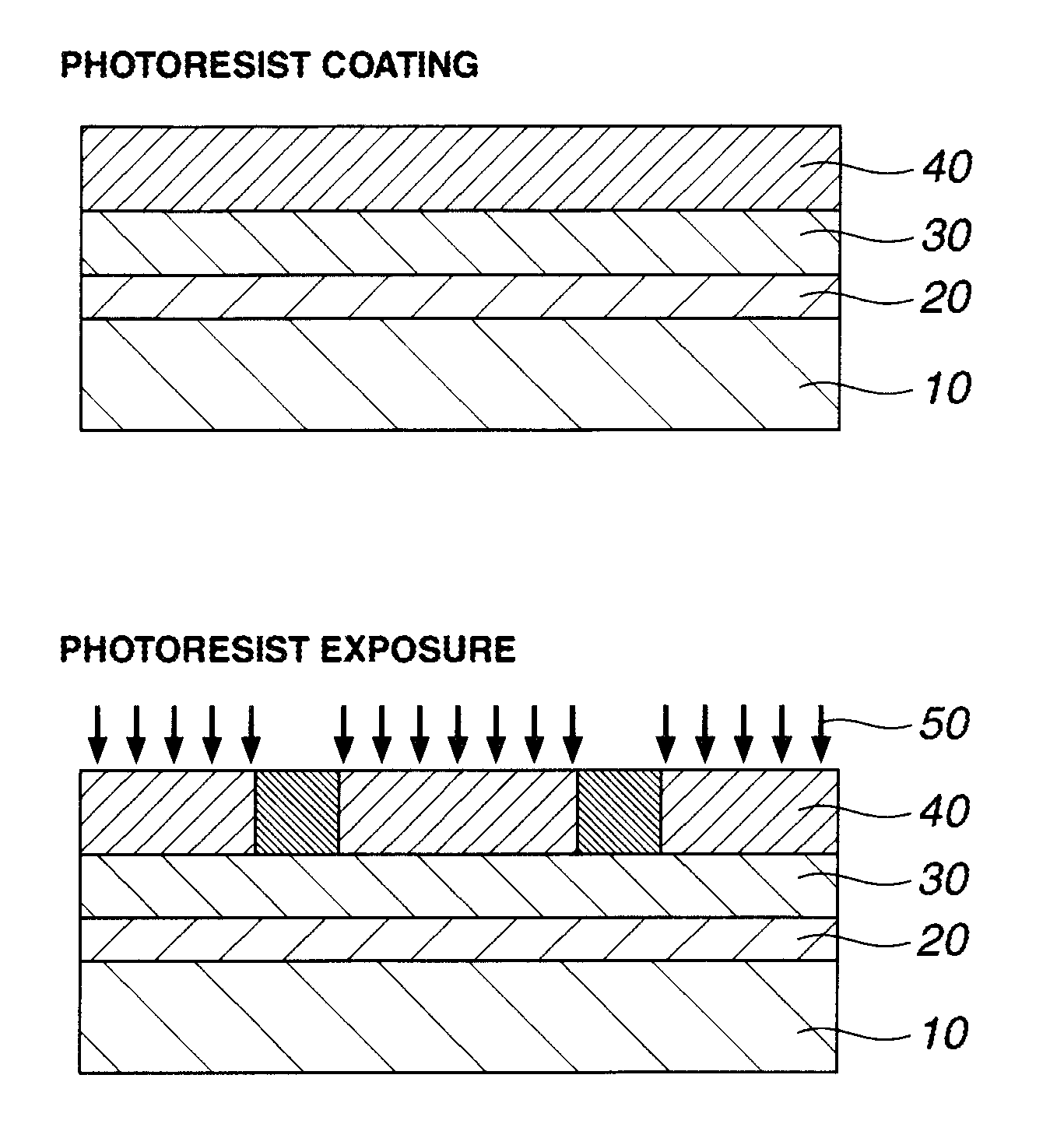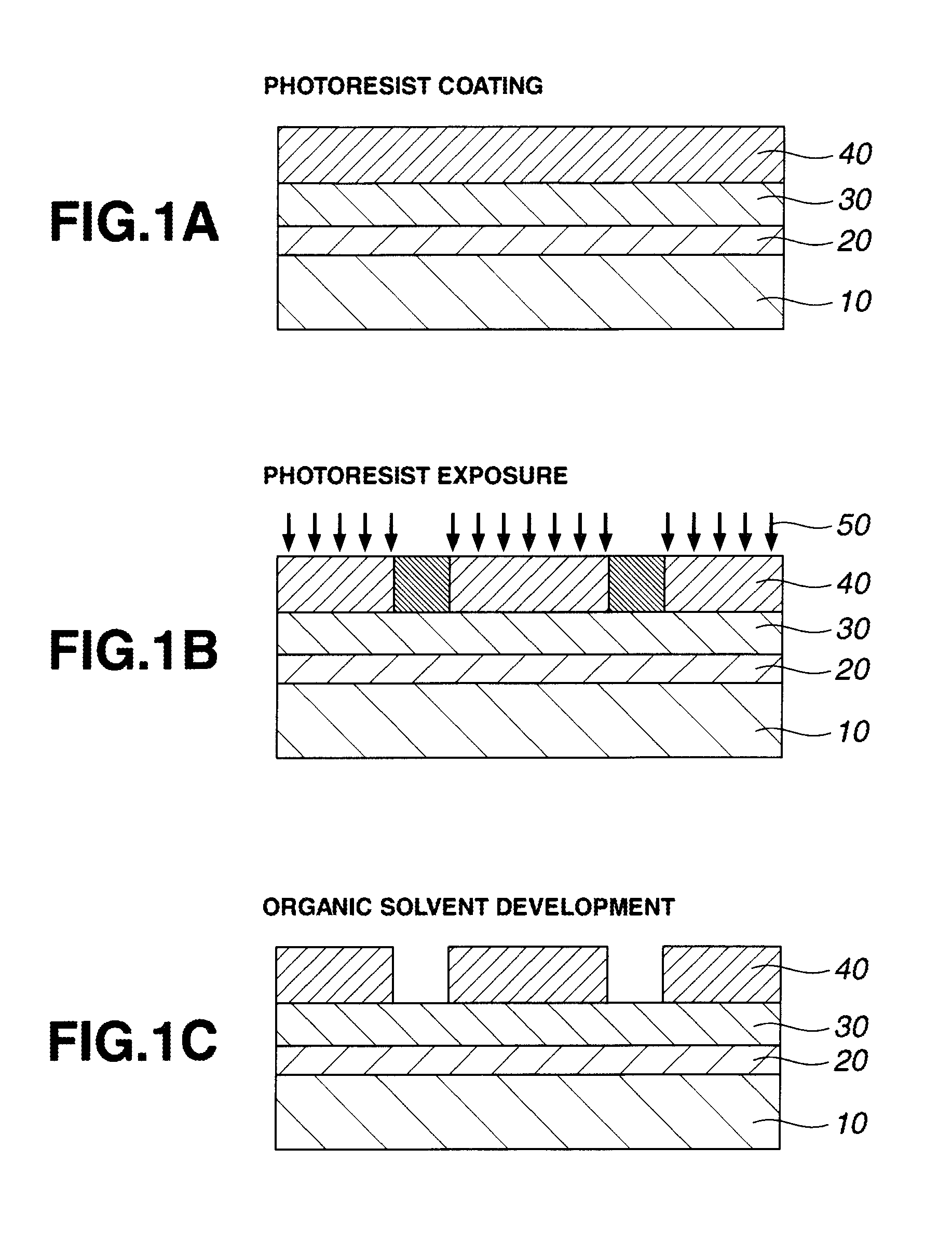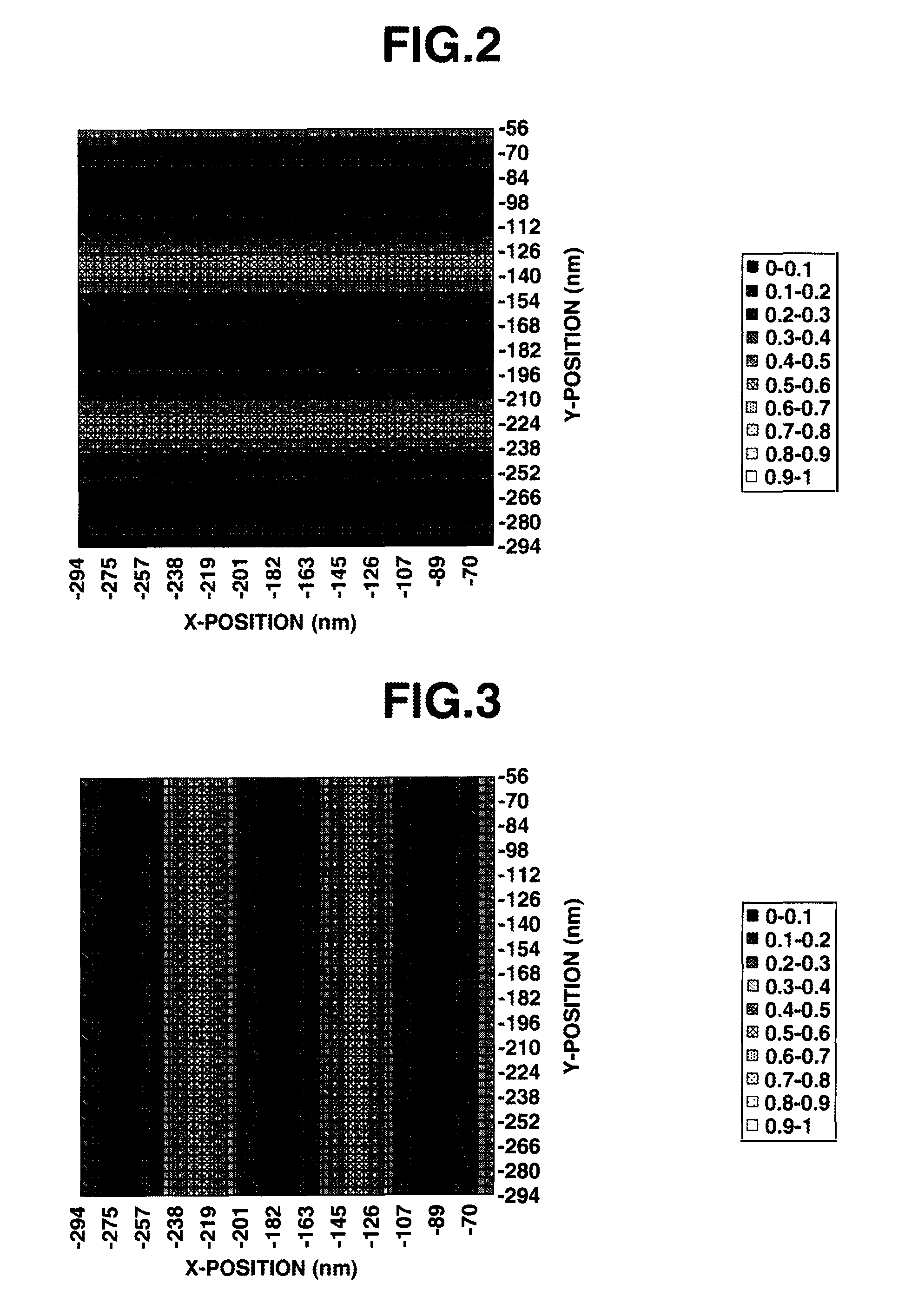Patterning process and resist composition
a resist composition and patterning technology, applied in the field of pattern formation process, can solve the problems of loss of top of film thickness, loss of film thickness, and more serious problems of hole opening failure following negative development, and achieve the effects of high dissolution contrast, high precision of dimensional control, and effective control of acid diffusion
- Summary
- Abstract
- Description
- Claims
- Application Information
AI Technical Summary
Benefits of technology
Problems solved by technology
Method used
Image
Examples
example
[0159]Examples of the invention are given below by way of illustration and not by way of limitation. The abbreviation “pbw” is parts by weight. For all polymers, Mw and Mn are determined by GPC versus polystyrene standards using tetrahydrofuran solvent. For pattern profile observation, a top-down scanning electron microscope (TDSEM) S-9380 (Hitachi Hitechnologies, Ltd.) was used.
Reference Example
[0160]Reference is made to the synthesis of a nitrogen-containing monomer used in the preparation of Resist Polymer 9.
Synthesis of 1-tert-butoxycarbonylpiperidin-4-yl methacrylate
[0161]
[0162]In a nitrogen atmosphere, 50 g of 1-tert-butoxycarbonylpiperidin-4-ol, 26.8 g of triethylamine, and 2.9 g of 4-dimethylaminopyridine were mixed in 200 g of toluene. Under ice cooling, 40 g of methacrylic anhydride was added dropwise to the solution at a temperature below 40° C. The solution was stirred for 4 hours at room temperature, whereupon 100 g of water was added dropwise below 20° C. to quench the...
synthesis example
[0167]Polymers for use in resist compositions were prepared from selected monomers by a standard technique including copolymerization reaction in tetrahydrofuran solvent, crystallization from methanol, repeated washing with hexane, isolation and drying. The resulting polymers designated Polymers 1 to 23 and Comparative Polymers 1 to 3 had a composition as analyzed by 1H-NMR spectroscopy and a Mw and dispersity (Mw / Mn) as measured by GPC.
[0168]Mw=8,310
[0169]Mw / Mn=1.73
[0170]Mw=8,900
[0171]Mw / Mn=1.89
Resist Polymer 3
[0172]Mw=8,200
[0173]Mw / Mn=1.84
Resist Polymer 4
[0174]Mw=8,300
[0175]Mw / Mn=1.89
Resist Polymer 5
[0176]Mw=6,500
[0177]Mw / Mn=1.79
Resist Polymer 6
[0178]Mw=8,770
[0179]Mw / Mn=1.77
Resist Polymer 7
[0180]Mw=8,900
[0181]Mw / Mn=1.71
Resist Polymer 8
[0182]Mw=9,900
[0183]Mw / Mn=1.98
Resist Polymer 9
[0184]Mw=8,900
[0185]Mw / Mn=1.71
Resist Polymer 10
[0186]Mw=8,900
[0187]Mw / Mn=1.99
Resist Polymer 11
[0188]Mw=8,500
[0189]Mw / Mn=1.83
Resist Polymer 12
[0190]Mw=8,200
[0191]Mw / Mn=1.72
R...
PUM
 Login to View More
Login to View More Abstract
Description
Claims
Application Information
 Login to View More
Login to View More - R&D
- Intellectual Property
- Life Sciences
- Materials
- Tech Scout
- Unparalleled Data Quality
- Higher Quality Content
- 60% Fewer Hallucinations
Browse by: Latest US Patents, China's latest patents, Technical Efficacy Thesaurus, Application Domain, Technology Topic, Popular Technical Reports.
© 2025 PatSnap. All rights reserved.Legal|Privacy policy|Modern Slavery Act Transparency Statement|Sitemap|About US| Contact US: help@patsnap.com



